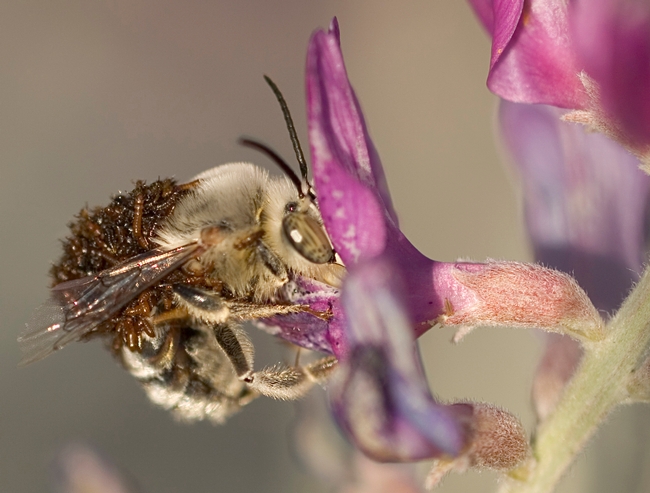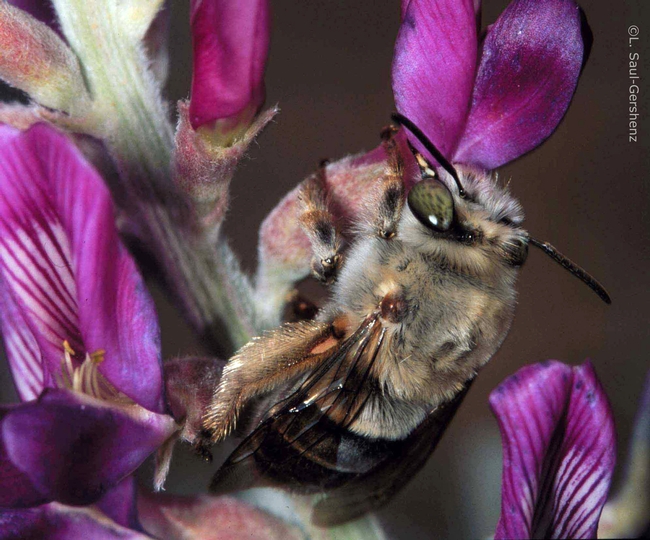
If that word is not in your everyday vocabulary, just think of a symbiotic relationship where one organism transports another organism of a different species for the benefit of both.
And there you have it--at least part of it--of what evolutionary ecologist Leslie Saul-Gershenz of the University of California, Davis, is doing.
Saul-Gershenz researches a species of digger bee, Habropoda pallida, a solitary ground-nesting bee, and its nest parasite, a blister beetle, Meloe franciscanus, found in the Mojave Desert ecosystem.
She and Neal Williams (her major professor) of UC Davis and Jocelyn Millar of UC Riverside just received a grant to study digger bee ecology and conservation. They're working with SaveNature.Org, which Saul-Gershenz co-founded.
The relationship between the bee and the blister beetle is part of it.
What's this symbiotic relationship about? The larvae of the parasitic blister beetle produce a chemical cue or a pheromone similar to that of a female solitary bee to lure males to the larval aggregation. The larvae attach to the male bee and then transfer to the female during mating. The end result: the larvae wind up in the nest of a female bee, where they eat the nest provisions and likely the host egg, Saul-Gershenz says.
Like to read more about this exciting research? Saul-Gershenz and Millar published their blister beetle/digger bee work, "Phoretic Nest Parasites Use Sexual Deception to Obtain Transport to their Host's Nest," in the Proceedings of the National Academy of Sciences (PNAS, 2006).
That led Pulitzer Prize-winning author Natalie Angier to feature their work in "The Art of Deception," published in the August 2009 edition of the National Geographic magazine. Most recently, U. S. Department of Agriculture (USDA) Forest Service entomologist Michael Ulyshen, writing for the Journal of Natural History, mentioned their work in "Bugback Riding: Transportation for the Masses" (September 2011).
Saul-Gershenz said she became interested in the subject while she was a graduate student at San Francisco State University. She wrote "Beetle Larvae Cooperate to Mimic Bees" in the journal Nature (2000).
Of her newest grant, she says: “Our preliminary data show that the blister beetle exploits four other native California bees including important pollinators in the genus Habropoda and Anthophora." Historically, M. franciscanus was known to be a nest parasite of Anthophora edwardsii distributed throughout California.
You may know Saul-Gershenz as a past president of the Pacific Coast Entomological Society. In 1991, she became the first female president in its 91-year history.
Attached Images:

Larvae of a blister beetle, Meloe franciscanus, on a digger bee, Habropoda pallida. (Photo by Leslie Saul-Gershenz, used with permission)

Digger bee, Habropoda pallida, a solitary ground-nesting bee, on Borrego milkvetch. (Photo by Leslie Saul-Gershenz, used with permission)